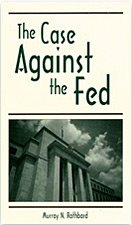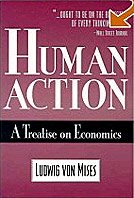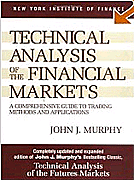The Coming Collapse of the U.S. Dollar
The Coming Collapse of the U.S. Dollar
By M.R. Venkatesh
Rediff.com, Mumbai
Monday, June 11, 2007
The skew in the global financial system -- commonly called "global imbalance" -- seems to be fast spiralling out of control.
For some time now economists have been engaged in the mother of all debates: whether the US dollar would collapse by as much as 40% when compared to other currencies (some are even betting on the US dollar going belly-up) or whether there would be an orderly devaluation -- that is, a gradual revaluation of other currencies vis-a-vis the US dollar.
In effect, the question that is confronting us is not "whether" but "when" and by "how much."
This global imbalance can be understood in economic terms by simply examining the massive size of America's twin deficits -- trade and budgetary. Put modestly, Americans have been living way beyond their means, consuming much more than what they could possibly afford and, in the process, borrowing far beyond their capacity for too long.
This was facilitated by a policy of maintaining weak currencies across the world, notably in Asia. This policy of maintaining a competitive exchange rate for their currency to boost exports has resulted in a race to the bottom amongst various countries.
Nevertheless, this arrangement suited countries, both Asian (with a huge unemployed population) and American, (as it provided cheap imports for its huge consumption binge).
While the going was good, everyone profited and expected the arrangement to continue indefinitely. Unfortunately, linearity as a concept has limited appeal in real life, much less is global macroeconomics.
No wonder, of late, countries are discovering that this arrangement has its limitations. The current account deficit of the United States translates into current account surplus of exporting countries. To cover this deficit, US borrows: this corresponds to the forex reserves of exporting countries. The crux of the issue is that no other country, barring the US, has such a huge consumption pattern and an ability to absorb this huge export surplus.
In substance, countries are producing their goods, exporting it mostly to the US, and parking the resulting export surpluses with the US to facilitate US to finance its imports!
Clearly, the global imbalance is a by-product of this mindless competition by various countries to devalue their own currencies and the reckless consumption in US. Naturally, it is indeed tempting to blame US consumption for this crisis. However, one must hasten to add that the emerging economies -- notably Asian countries, especially after the1998 currency crisis -- with their fixation for weak currencies, are equally to be blamed.
The net result? Well, consider these facts:
By mid-May 2007, the US National Debt stood at approximately at mind-boggling $8.85 trillion -- i.e., approximately $28,000 for every American.
The basic structure of the American economy is that the deficit of the US government is 4% of the GDP and the household sector 6%, which are offset by a domestic savings of 3%, largely from corporates, leaving a substantial national deficit of 7% to be covered by the capital flows from the rest of the world.
The current account deficit of the United States for 2006 is estimated to be in excess of $850 billion. This approximates to 7% of its GDP. Surely, even for the US, this is unsustainable.
In order to ensure that this money is routed into America and to sustain its gargantuan borrowing programme, the US has repeatedly raised its interest rate to its current levels of 5.5%. While the very size of the US debt makes any further increase in interest rates virtually impossible (as it would make borrowings uneconomical), any cut in interest rates to stimulate its economy and make it competitive would mean that the US may not get the money it requires to sustain itself.
On March 28, 2006, the Asian Development Bank is reported to have issued a memo, advising members to be ready for a collapse of the US dollar.
Since end March 2006, the US Federal Reserve has stopped publishing the quantum of broad money (that is the aggregate of US dollars circulating in the entire world -- technically called 'M3') in the US economy. This is the worst possible signal that the US Federal Reserve could have sent to the world.
... Suspended sense of disbelief
Obviously, what aids and sustains the US dollar is a "suspended sense of disbelief" amongst countries about the value of US dollar. Yet, common sense tells us that the excess supply will obviously result in a fall in the value of any product. The US dollar is no exception.
Late Iraqi leader Saddam Hussein was fully aware of this paradigm. Seeking to exploit the inherent weakness of the US dollar, Saddam wanted to trade his crude in Euros, which would have lead to a lower demand for the US Dollar and thereby triggered a dollar collapse. And those were his "weapons of mass destruction -- WMD."
And if some analysts are to be believed, Venezuela and Iran too possess the very same WMD. Naturally, it requires some specious arguments and military intervention to protect the US dollar. Never in the history of mankind has a national army protected the national currency so vigorously as the US Army has done is the past decade or so.
What is bizarre to note here is that despite the fact that crude is produced mainly in the Middle East; officially it can be purchased in dollar terms from one of the two oil exchanges situated in New York and London. Obviously, should Iran carry out the threat to commence oil trade in Euros or better still an oil exchange, the US dollar would come under tremendous pressure.
The US dollar is akin to the promissory note of a defunct finance company. It is common knowledge that a currency, when not backed by anything precious is just a piece of paper. When US abandoned the Gold Standard in early 70s, countries habituated by then to the US dollar under the Bretton Woods arrangement continued to accept the US dollar as an international currency without demur as the world was not prepared for any other alternative. Else, the global economy would have collapsed by 1971.
But the diplomatic silence did not solve the problem. It merely postponed it and it has come back to haunt us.
Post gold standard, by a tacit approval of the Organisation of Petroleum Exporting Countries (OPEC) and strategic manoeuvring, the US had ensured that its currency is implicitly backed by crude, instead of gold. This explains the American 'geo-political and strategic interests' in the Middle East.
But over time even this was found to be insufficient and consequently the oil standard of the 70s gave way to an implicit multiple commodity standard of today. Naturally, commodity prices -- including crude prices -- have soared in the past few years. Unfortunately, this arrangement too is failing the US. No wonder the US dollar increasingly resembles a promisory note of a defunct finance company.
It is no coincidence that global trade in most commodities, including oil, is denominated in US dollars as the respective international exchanges are located in the US. To what extent are the prices of these commodities manipulated to protect the US dollar is anybody's guess.
However, it may not be out of place to mention that a barrel of oil which cost less than $10 to produce is sold approximately at $70 in the international market.
But as commodity prices go up it has lead to inflation across the globe. No wonder, countries are forced to increase their interest rates to fight inflation.
This has triggered an interest rate hike across continents and the US is finding it extremely difficult to sustain its current borrowing programme: it hardly has any elbow room to manoeuvre.
...Doomed if it does, damned if it doesn't
Meanwhile, countries are increasingly realizing that the value of the US dollar that they are holding is fast eroding, whatever be the 'officially managed exchange rate.' And if fewer people want the US dollar -- as for instance when oil is traded in Euro the demand for the US dollar will fall -- it would trigger an avalanche.
No wonder the US Fed is unwilling to make public the M3 figures, as it does not want the holding position of the US dollar to be publicised.
Interestingly, in such a doomsday scenario, some economists are still betting on central banks of other countries to defend the US dollar. It would seem that the US has 'outsourced' even this sovereign function to the central banks of other countries. After all, should the US dollar collapse, the biggest losers will not be the US but those who have US dollar-denominated forex reserves.
Naturally, countries holding US dollar reserves are caught on the horns of a serious dilemma -- should they seek to correct the global imbalance, it could result in the imminent collapse of the US dollar, and should they continue to defend the US dollar, they would be a long-term loser as the current arrangement has seeds of self-destruction.
While every central banker is conscious of this fact and thereby seeks to postpone the inevitable while nervously looking for his counterpart in any other country to break ranks and thereby trigger the collapse.
Surely, the emperor is without any clothes. There are only two possibilities from here on: Either we are witness a global meltdown of the US dollar, or allow controlled US dollar devaluation (read, revaluation of other currencies). If it is a global meltdown the global economy is doomed, if is an orderly devaluation, it is damned.
-----------
The author is a Chennai-based chartered accountant. He can be contacted at mrv1000@rediffmail.com.
Labels: financial crisis, inflation, money















![[Most Recent Quotes from www.kitco.com] [Most Recent Quotes from www.kitco.com]](http://www.kitco.com/images/live/t24_au_en_usoz_6.gif)
![[Most Recent Quotes from www.kitco.com] [Most Recent Quotes from www.kitco.com]](http://www.kitco.com/images/live/au_go_0030_ny.gif)
![[Most Recent Quotes from www.kitco.com] [Most Recent Quotes from www.kitco.com]](http://www.kitco.com/images/live/au_go_0365_ny.gif)
![[Most Recent Quotes from www.kitco.com] [Most Recent Quotes from www.kitco.com]](http://kitconet.com/charts/metals/silver/t24_ag_en_usoz_4.gif)

















0 ΣΧΟΛΙΑ (COMMENTS):
Post a Comment
<< Home